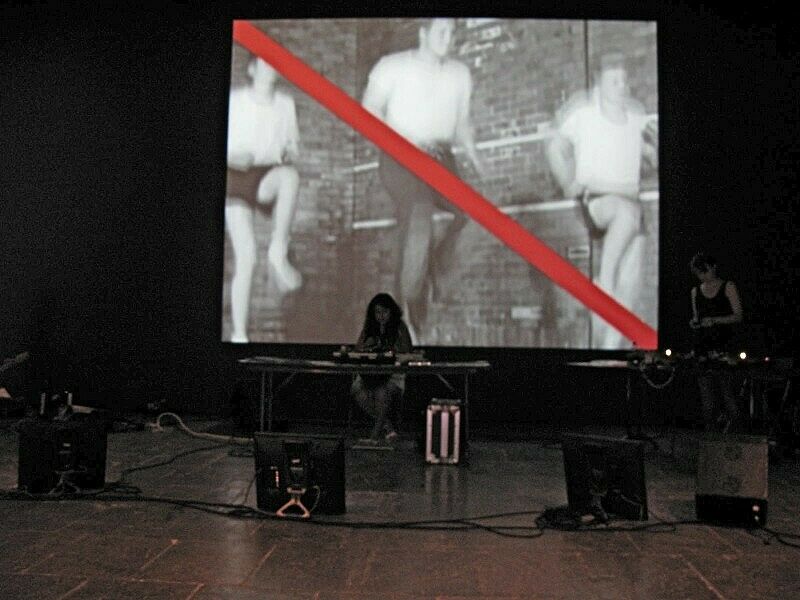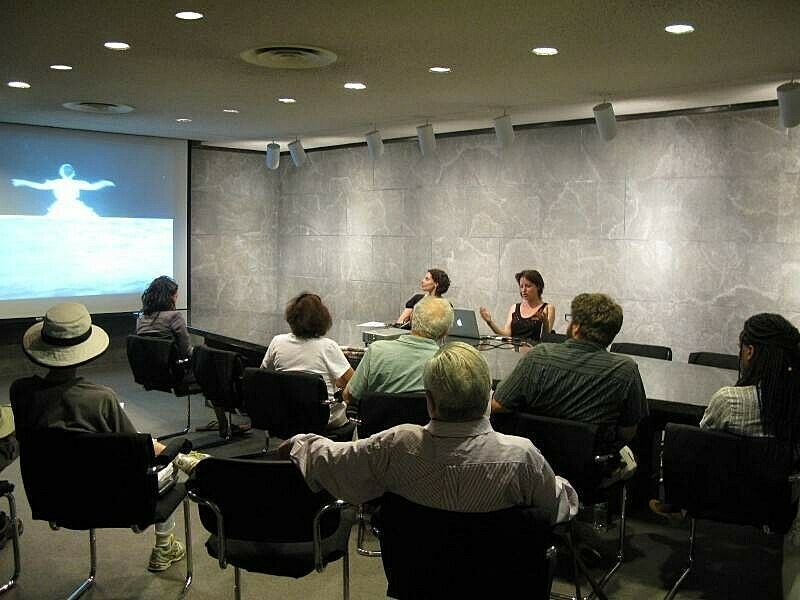Musician As Interpreter: Marina Rosenfeld Speaks About Performing Christian Marclay’s Screenplay
Jul 15, 2010
On Friday, July 9, artist and composer Marina Rosenfeld—with musician Maria Chavez and special guest Austin Julian—performed Christian Marclay’s Screenplay, an approximately thirty-minute video comprised of Hollywood film clips, occasionally superimposed with animations of lines, dots, and color fields. Screenplay was created by Marclay as a visual score to be interpreted by a small group of musicians and is on view now in Christian Marclay: Festival. In an Artist’s Talk before the performance, Rosenfeld spoke to audience members about her approach to Screenplay.
Rosenfeld, a turntablist and improviser, first encountered Marclay’s work in graduate school and since then has become an occasional collaborator with him. When describing her interest in his visual scores, Rosenfeld pointed to the history of musical graphic notation (notation that uses non-traditional means to direct musical action). Expanding the possibilities of graphic notation—as Marclay does with his visual scores—allows for musical actions that can’t be traditionally written. Such scores also depend on improvisation as an integral part of the performance.
When performing Screenplay, Rosenfeld described how she and her fellow musicians can respond to any visual aspect that could potentially function as “notation." Musical action could be indicated in a literal sense (an image of a train could mean the sound a train makes); it could be evoked more abstractly by an environment (a city street could call to mind a frenetic, loud sound); or sound could even be implied in the movements themselves (the musician’s hand could mimic on the instrument the movement seen in the film clips or the animation). In the case of Screenplay, Rosenfeld explained that she tends to see sound implied in a more abstract than literal way.
One of the ways that performing a visual score differs from performing tradition musical notation is that the musician cannot read ahead to anticipate what comes next, whereas when reading sheet music a musician is always reading about ten seconds ahead of what they are playing. While Rosenfeld described how this immediacy creates an aspect of “hysteria,” it also ensures that the score will be entirely different every time it is performed.
Artist’s Talks will continue weekly during the Christian Marclay: Festival
By Sarah Meller, Interpretation and Research Assistant


